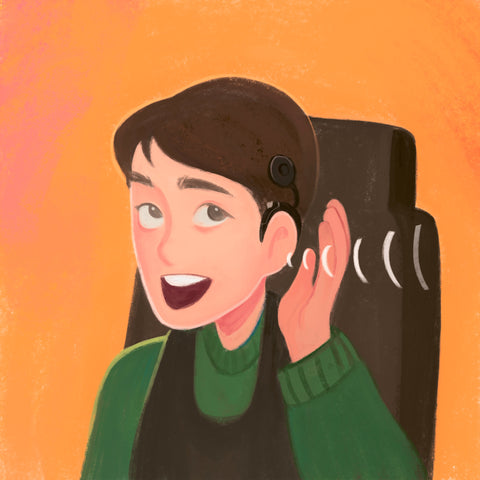Glossary
Cochlear ImplantsA cochlear implant is an electronic device that can restore hearing. It can be an option for people who have severe hearing loss from inner-ear damage who are no longer helped by using hearing aids. Unlike hearing aids, which amplify sound, a cochlear implant bypasses damaged portions of the ear to deliver sound signals to the hearing (auditory) nerve. Cochlear implants use a sound processor that fits behind the ear. The processor captures sound signals and sends them to a receiver implanted under the skin behind the ear. The receiver sends the signals to electrodes implanted in the snail-shaped inner ear (cochlea). The signals stimulate the auditory nerve, which then directs them to the brain. The brain interprets those signals as sounds, though these sounds won't be just like normal hearing. It takes time and training to learn to interpret the signals received from a cochlear implant. One of the early intervention options for infants, toddlers, and young children who are fit with hearing aids or for those patients who receive unilateral or bilateral cochlear implants is the Auditory-Verbal Therapy (AVT) approach. AVT is an auditory-based teaching approach with significant family involvement. The goal of auditory-based teaching approaches for children with hearing loss, is to teach the family how their child can in fact “learn to listen”; and through learning to listen, develop spoken language. Within a year of use, most people with cochlear implants make considerable gains in understanding speech. |

|
Communication DevicesCommunication devices, also called Augmentative and Alternative Communication (AAC) devices, are equipment people use to communicate without using verbal speech. In addition to unaided communication, such as facial expressions and gestures, these tools can help people with communication disorders interact with others and improve their language skills. |

|
WheelchairA wheelchair assists people to become more mobile and independent. There are many different types of wheelchairs that are used for various reasons. There are manual push chairs that people propel on their own or with the help of a caregiver. There are also Power wheelchairs (also known as electric wheelchairs or power chairs) that are for people who can control their chair electronically and are usually unable to move a manual wheelchair by themselves (due to physical mobility or cardiovascular strength). There are many different types of power wheelchairs, and selecting the correct one for the user is very important for his/her comfort and well-being. Some people control their power chair using a controller with their hands, heads or whatever works for that individual. This allows the individual to be more independent. No matter what type of chair a person uses, they are there to help the person to become more independent. |

|
A Gastrostomy Tube/G-TubeSome kids have medical issue that makes it hard for them to get enough nutrition by mouth. A gastrostomy tube (also called a G-tube) is a tube inserted through the belly that brings nutrition directly to the stomach. It's one of the ways doctors can make sure kids who have trouble eating get the fluid and calories they need. A surgeon puts in a G-tube during a short procedure called a gastrostomy. The G-tube can stay in place for as long as a child needs it. People who have had a gastrostomy can get back to their normal activities fairly quickly after they have healed. |

|
AFO'sAn ankle-foot orthosis, or AFO, is a support intended to control the position and motion of the ankle, compensate for weakness, or correct deformities. AFOs can be used to support weak limbs, or to position a limb with contracted muscles into a more normal position. In addition, AFOs are used to control foot drop caused by a variety of neurologic and musculoskeletal disorders. Due to the common use for addressing foot drop, AFO has become synonymous with the term “foot-drop brace”. The goal of AFO use is to stabilize the foot and ankle and provide toe clearance during the swing phase of gait. This helps decrease the risk of catching the toe and falling. |

|
HEARING AIDSA hearing aid is a small electronic device that you wear in or behind your ear. It makes some sounds louder so that a person with hearing loss can listen, communicate, and participate more fully in daily activities. A hearing aid can help people hear more in both quiet and noisy situations. However, only about one out of five people who would benefit from a hearing aid actually uses one. A hearing aid has three basic parts: a microphone, amplifier, and speaker. The hearing aid receives sound through a microphone, which converts the sound waves to electrical signals and sends them to an amplifier. The amplifier increases the power of the signals and then sends them to the ear through a speaker. |

|